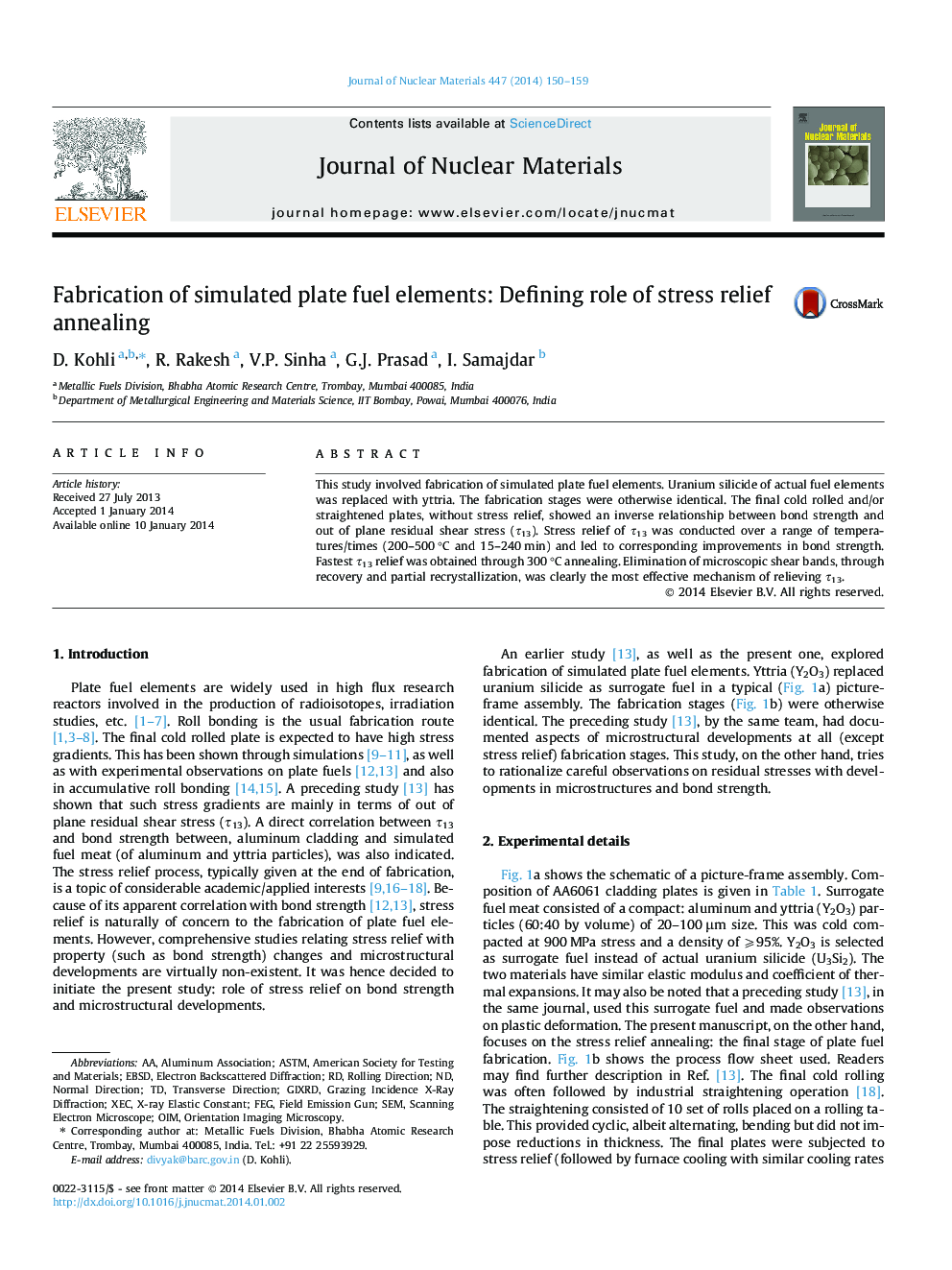| Article ID | Journal | Published Year | Pages | File Type |
|---|---|---|---|---|
| 7968048 | Journal of Nuclear Materials | 2014 | 10 Pages |
Abstract
This study involved fabrication of simulated plate fuel elements. Uranium silicide of actual fuel elements was replaced with yttria. The fabrication stages were otherwise identical. The final cold rolled and/or straightened plates, without stress relief, showed an inverse relationship between bond strength and out of plane residual shear stress (Ï13). Stress relief of Ï13 was conducted over a range of temperatures/times (200-500 °C and 15-240 min) and led to corresponding improvements in bond strength. Fastest Ï13 relief was obtained through 300 °C annealing. Elimination of microscopic shear bands, through recovery and partial recrystallization, was clearly the most effective mechanism of relieving Ï13.
Keywords
Related Topics
Physical Sciences and Engineering
Energy
Nuclear Energy and Engineering
Authors
D. Kohli, R. Rakesh, V.P. Sinha, G.J. Prasad, I. Samajdar,
